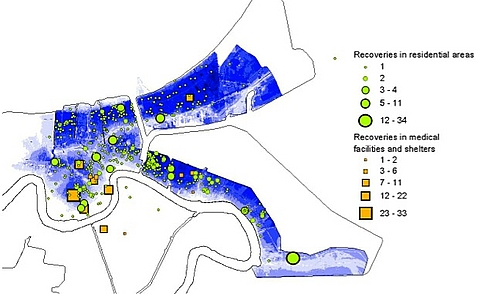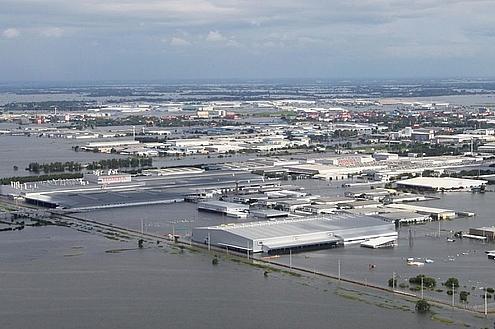Development of Methods for Damage and Loss of Life Estimation
In order to assess flood risks and make related policy decisions it is important to know the potential consequences of floods. Over the last years research in our group has contributed to the further development of loss of life and damage.
Following the disastrous flooding of New Orleans due to hurricane Katrina, life loss datasets have been analysed. Empirical relationships have been developed to predict life loss as a function of flood characteristics (depth, rise rate, flow velocity).

Life loss dataset for New Orleans (Jonkman et al., 2009)
We have worked with several organizations to do contract research in this field. Partners include the US Army Corps of Engineers, US Bureau of Reclamation and British Columbia Hydro. Currently we are involved in a comparison effort, in which various methods for life loss estimation and evacuation analysis are compared base on case studies in the US.
Structural building damage
Another research field focuses on structural damage to buildings due to hydrodynamic impacts. Group members have undertaken experiments to study and measure the hydrodynamic impacts. We have also done studies to analyse structural building damage observations from past floods and relate these to hydraulic impacts. A relatively novel research area focuses on the indirect impacts and cascading effects of floods. Events like the tsunami in Japan, the floods in Thailand, and the flooding of New York due to hurricane Sandy show that consequences will expand outside the flooded area and could last for a long period after the flood.

Experimental work at TU Delft to assess the hydrodynamic impacts (G. Cuomo)

Flooding of Rojana Industrial Estate near Bangkok during the 2011 floods (Wikipedia)
Several publications in the above research fields can be downloaded from Bas Jonkman’s website.